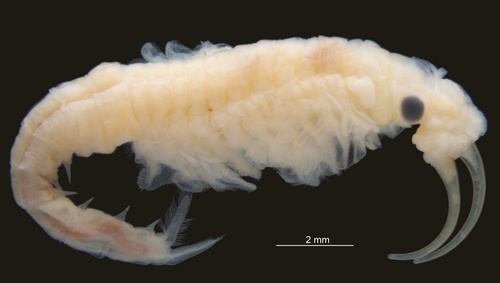Almost deprived of vegetation, the Lut desert harbors a diverse animal life, but no permanent aquatic biotops, such as ponds. Instead, after rain falls, non-permanent astatic water bodies are filled including the Rud-e-Shur river from north-western Lut. And that is when these new creatures can be more readily found.
Dr. Martin Schwentner, Crustacea specialist from the Natural History Museum of Vienna, said, "These Crustaceans are able to survive for decades in the dried-out sediment and will hatch in an upcoming wet season, when the aquatic habitat refills. They are perfectly adapted to live in deserts environments. Their ability to survive even in the Lut desert highlights their resilience."
The newly identified species, Phallocryptus fahimii, belongs to the genus Phallocryptus of which only four species were previously known, all in arid and semi-arid regions. The subphylum Crustacea includes animals like crayfish and barnacles.

Phallocryptus fahimii. Credit: M. Pallmann SMNS / Pallmann
Located between 33° and 28° parallels and with its 51,800 km2 larger than Switzerland, this desert holds the current record for the highest ever-recorded surface temperature. Based on 2006 satellite measurements, the NASA reported a record surface temperature of 70.7°C, which more recently has been increased to even 80.3°C. Dark pebbles that heat up are one of the causes of these record temperatures. Mean daily temperatures range from -2.6°C in winter to 50.4°C in summer with annual precipitation not exceeding 30 mm per year.




Comments